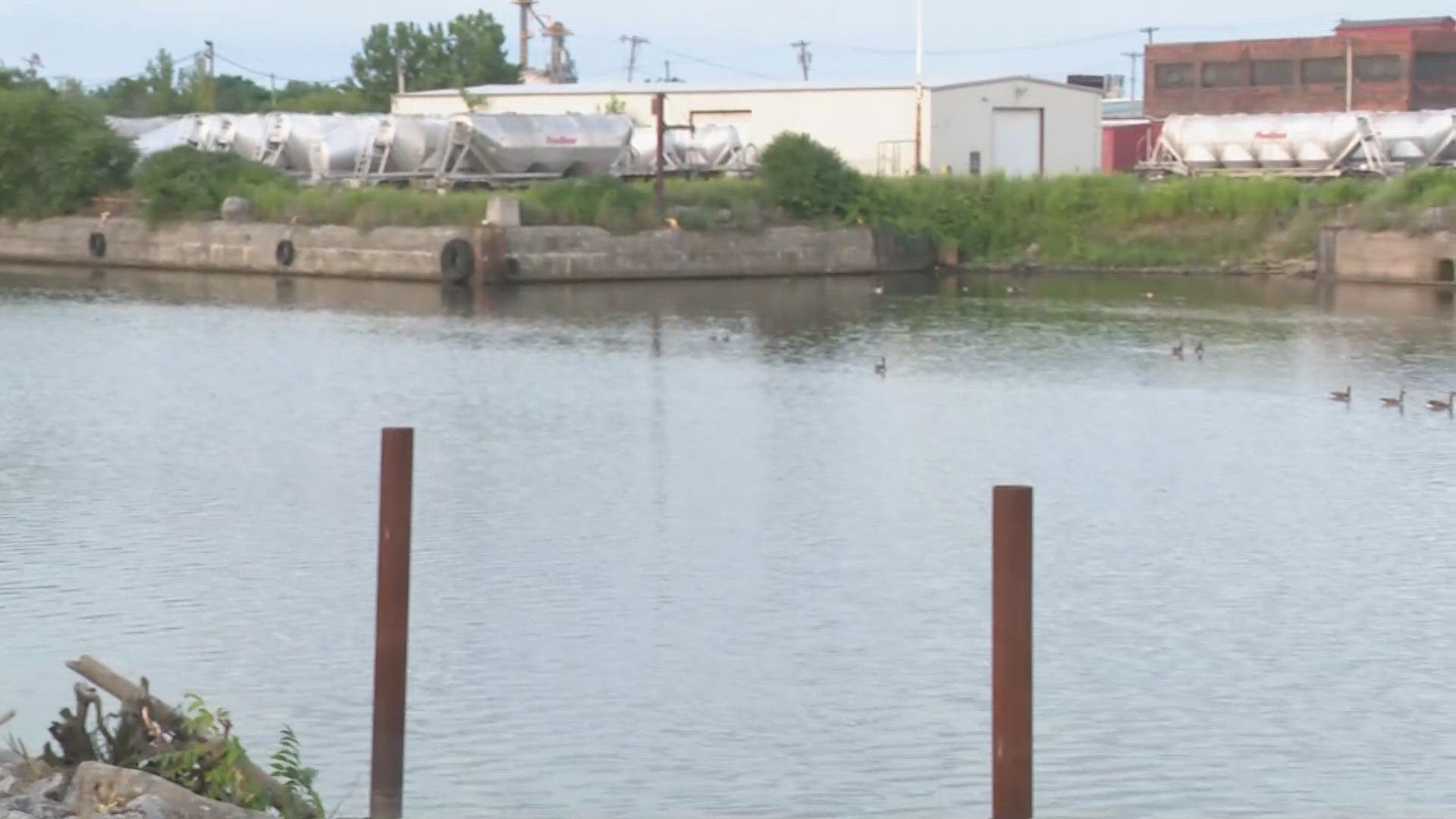BUFFALO, N.Y. — A portion of the Buffalo River is close to being removed from another environmental watch list after decades of restoration work and efforts to clean up pollution from the city's industrial past.
The river, from Cazenovia Creek to Canalside, is an EPA-designated area of concern or AOC because heavy metals, mostly lead and mercury and man-made chemicals such as PCBs and PAHs once lined the riverbed.
In 1989, the river was slapped with a BUI or Beneficial Use Impairment for Fish Tumors and Other Deformities which were the result of one group of chemicals, Polycyclic Aromatic Hydrocarbons or PAHs.
A new study from the New York Department of Environmental Conservation (DEC) however indicates that the fish population could be in good enough shape to remove the BUI designation.
"We've done the work that needs to be done to remove the toxic contamination threat from this river and now we're seeing the river itself start to recover and the fish and wildlife that exist within it," said Jill Jedlicka, Executive Director of Buffalo Niagara Waterkeeper.
The river came back from the "brink of death" Jedlicka said thanks to the removal of one million cubic yards of contaminated sediment and the restoration of 2 miles of shoreline.
For their study, the DEC collected 50 similarly aged brown bullheads from four zones along the Buffalo River and the City Ship Canal in 2021.
Those fish were then compared with approximately the same number of fish taken from a control site in 2019 from Long Point Inner Bay, Ontario, which according to the report is considered to be relatively pristine.
Of the 97 fish collected in total, five of them had tumors. Three of the fish had been taken from the Buffalo River and two of them from the control site.
"We're seeing that the younger wildlife, the fish that are maybe 3-5 years old have fewer incidences of tumors and health effects because now we've restored their environment and they're not being exposed to those toxins anymore," Jedlicka said.
The results of the study and other analyses as documented in a final report have been the main considerations for removing the BUI or Beneficial Use Impairment for Fish Tumors and Other Deformities, but that's not all.
The Department of Environmental Conservation is seeking public comment on its findings and the proposed removal of the BUI on Tuesday, July 30 at the Downtown Buffalo Library at 1 Lafayette Square from 5:30 p.m. to 7 p.m.
Jedlicka added, "Removing this BUI is just one more step forward in the restoration of this area of concern. We started off with nine BUIs after this one is removed we're going to be down to three."
In the next couple of years, she said that the Buffalo River could be entirely de-listed as a federal area of concern if the environmental signs still point towards progress but...
"That doesn't mean we stop moving forward we have to steward and we have to continue to monitor this river for the next generation."
Related Video:

